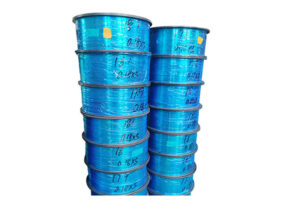Spring Materials Overview

Spring is an important part of mechanical equipment, and its working state often depends on the state of the material used, and the quality of the material plays a decisive role in the performance of the spring.
The most commonly used materials for spring manufacturing are metallic and non-metallic. As a functional material of elastic elements, high elasticity is undoubtedly the most important performance of the material; At the same time, because springs usually work under varying stresses, materials are required to have superior fatigue resistance. In addition, in order to facilitate processing and forming and reduce sudden failure, the material shall have sufficient plasticity and shear.
At first, natural materials such as wood and bamboo are used for spring manufacturing. After entering the industrial era, metal materials are widely used in the field of spring manufacturing. With the continuous expansion of the functions of mechanical products, the continuous improvement of performance indicators and the continuous improvement of the requirements for springs, a variety of special and special spring materials have been gradually formed. At present, the most widely used spring material is spring steel, which has the characteristics of high strength and high yield ratio. In order to meet the use requirements of special working conditions, stainless spring steel and special high temperature resistant, constant elasticity alloy and other materials are also used in spring manufacturing, greatly expanding the selection range of metal springs.
In terms of non-metallic materials, with the rapid development of chemical rubber industry in recent years, rubber, polyurethane and reinforced plastic materials are also widely used in spring products, and widely used in vibration reduction, noise reduction and other fields; The air spring with nitrogen or gas and liquid as the medium is also widely used in the fields of stamping die, main machine vibration reduction, constant force appliance, ultra-high temperature elastic structure, etc. Ceramic materials have high temperature resistance (above 800 ℃), corrosion resistance, wear resistance and other special properties, and have been used in some occasions as spring materials.
With the development of modern science and technology, there are more and more spring materials, and the spring design has a wider range of materials, making the spring
The application of spring products can meet the functional requirements and have the characteristics of safety, economy and environmental protection.






